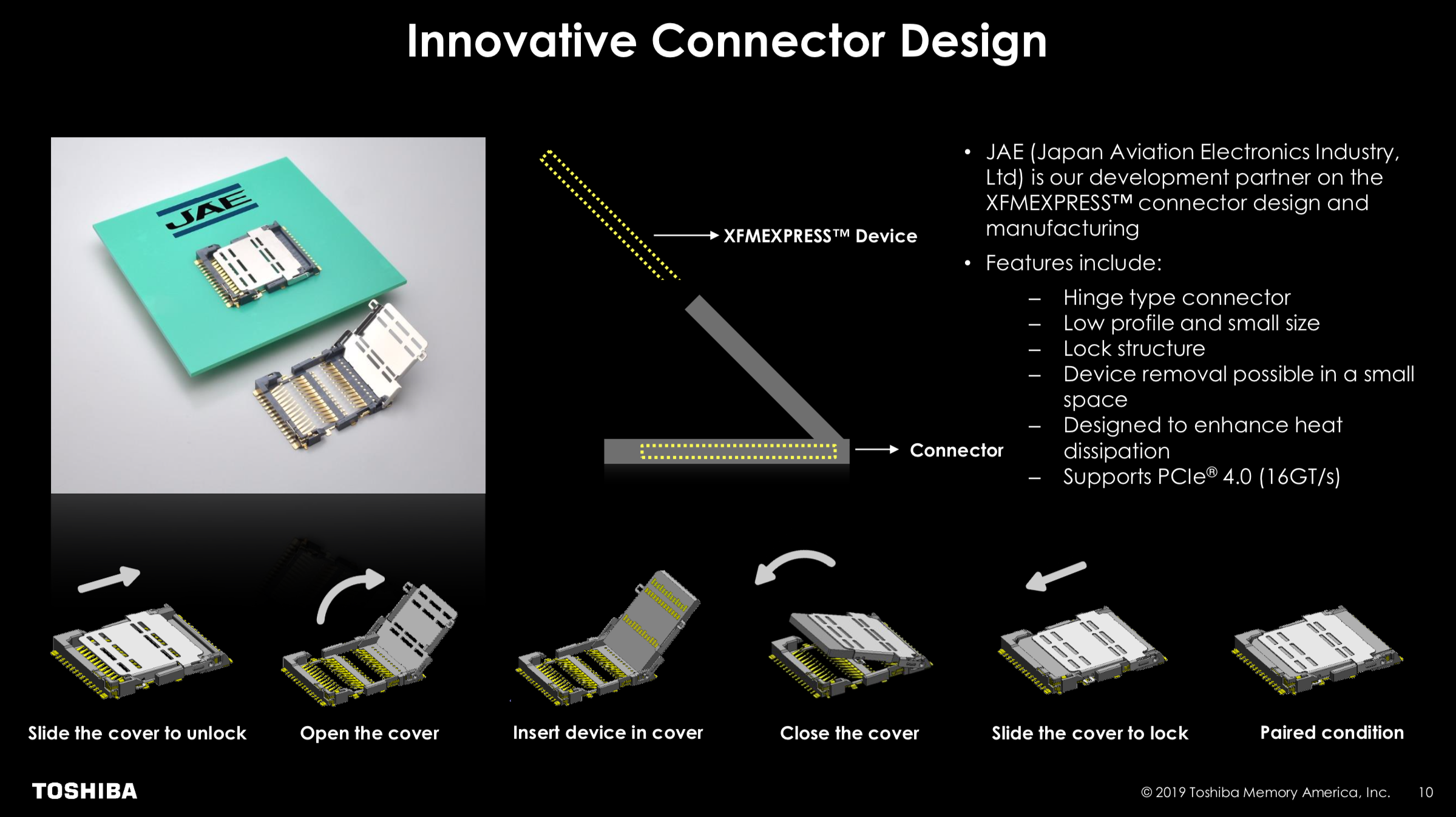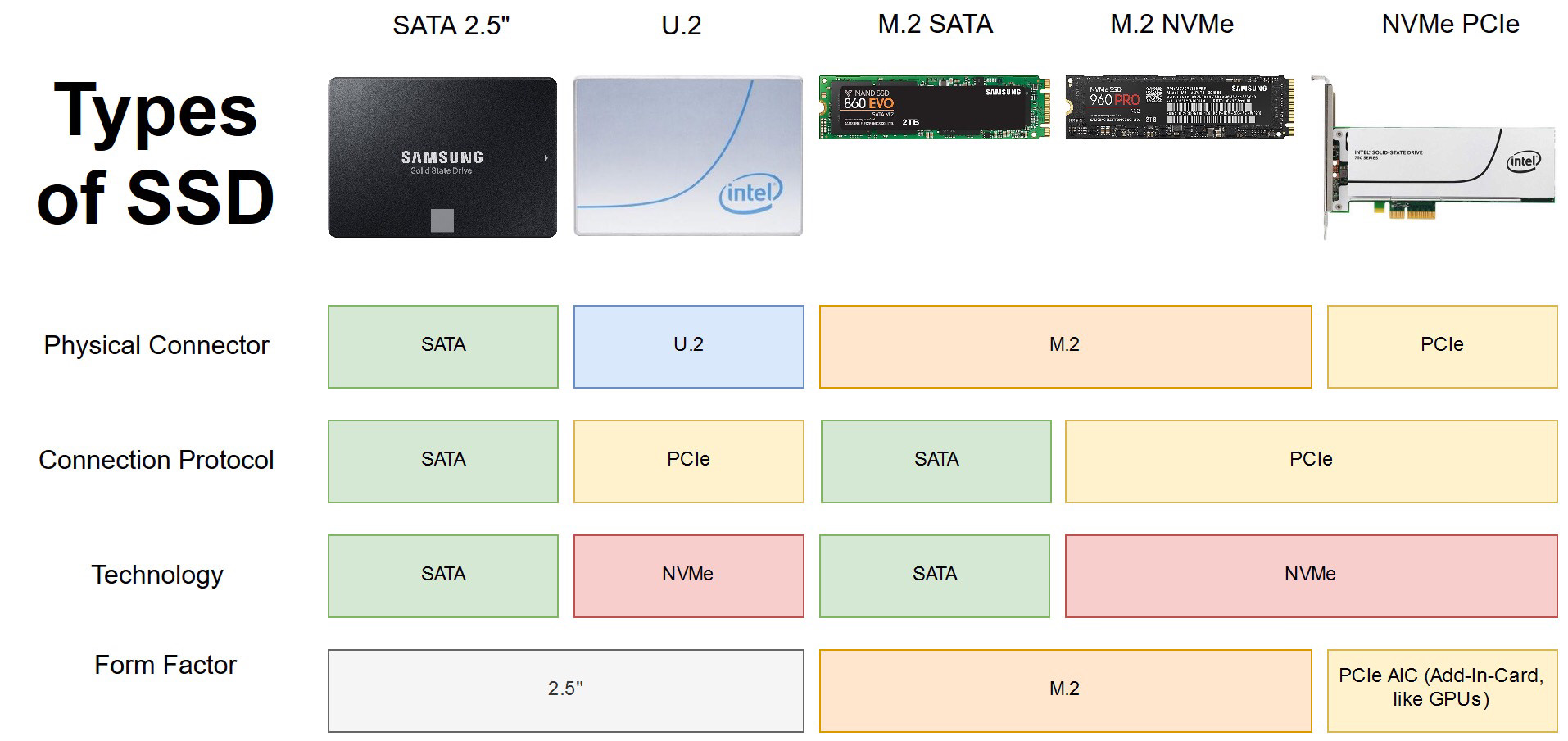Nvme Form Factor
Nvme Form Factor - The most common form factors are: Web no, m.2 and nvme aren't the same, but they work in conjunction with each other. M.2 replaces the msata standard, which uses the pci express mini card physical card layout and connectors. Here’s what you need to know about emerging form factors available for your new design. Web nvme drives come in lots of different form factors, generally driven by their market segment. Heatsink ball grid array (hsbga) ssds are atp’s tiniest flash storage solutions supporting the nvme protocol. Combining the faster nvme interface with the compact m.2 form factor, it offers high levels of performance with up to 5,500 mb/s sequential read speeds. Nvme is much faster because it provides more bandwidth than sata models which improves performance in heavier productivity applications. Atp m.2 2280 nvme ssd specifications m.2 type 1620 hsbga. Web nvme ssd deployments are surging, fueling the need for new capacities, performance, power, connectivity and form factors.
Web no, m.2 and nvme aren't the same, but they work in conjunction with each other. Web nvme ssd deployments are surging, fueling the need for new capacities, performance, power, connectivity and form factors. Web m.2 nvme ssds. Understanding the various form factors is important. Web nvme supports up to 10 million iops, 16 gbps of throughput, less than 10 microseconds of latency, 65,535 queues and 65,536 commands per queue. Nvme is much faster because it provides more bandwidth than sata models which improves performance in heavier productivity applications. Combining the faster nvme interface with the compact m.2 form factor, it offers high levels of performance with up to 5,500 mb/s sequential read speeds. Web nvme drives come in lots of different form factors, generally driven by their market segment. Web m.2, pronounced m dot two and formerly known as the next generation form factor (ngff), is a specification for internally mounted computer expansion cards and associated connectors. M.2 replaces the msata standard, which uses the pci express mini card physical card layout and connectors.
M.2 replaces the msata standard, which uses the pci express mini card physical card layout and connectors. Atp m.2 2280 nvme ssd specifications m.2 type 1620 hsbga. Web nvme drives come in lots of different form factors, generally driven by their market segment. Web nvme ssd deployments are surging, fueling the need for new capacities, performance, power, connectivity and form factors. Web no, m.2 and nvme aren't the same, but they work in conjunction with each other. The latest type of ssd available is the m.2 nvme ssd. Heatsink ball grid array (hsbga) ssds are atp’s tiniest flash storage solutions supporting the nvme protocol. Web nvme supports up to 10 million iops, 16 gbps of throughput, less than 10 microseconds of latency, 65,535 queues and 65,536 commands per queue. Web m.2 nvme ssds. M.2 is the ssd form factor, while nvme is the interface that connects it to the motherboard.
Meet EDSFF 1PB of flash storage in a single rack VentureBeat
Designed for flash, nvme's speed and low latency leave sata in the dust and enable much higher storage capacities in smaller form factors such as m.2. M.2 is the ssd form factor, while nvme is the interface that connects it to the motherboard. Understanding the various form factors is important. Nvme is much faster because it provides more bandwidth than.
Toshiba Introduces New Tiny NVMe SSD Form Factor
M.2 is the ssd form factor, while nvme is the interface that connects it to the motherboard. Understanding the various form factors is important. Combining the faster nvme interface with the compact m.2 form factor, it offers high levels of performance with up to 5,500 mb/s sequential read speeds. Web no, m.2 and nvme aren't the same, but they work.
NVMe SSDs New Features and Form Factors YouTube
Nvme is much faster because it provides more bandwidth than sata models which improves performance in heavier productivity applications. Web nvme supports up to 10 million iops, 16 gbps of throughput, less than 10 microseconds of latency, 65,535 queues and 65,536 commands per queue. M.2 is the ssd form factor, while nvme is the interface that connects it to the.
Different Types of SSDs Explained 2.5" / M.2, SATA / PCIe, NVMe
The latest type of ssd available is the m.2 nvme ssd. M.2 is the ssd form factor, while nvme is the interface that connects it to the motherboard. Heatsink ball grid array (hsbga) ssds are atp’s tiniest flash storage solutions supporting the nvme protocol. Here’s what you need to know about emerging form factors available for your new design. Web.
Inspiron 7773 which m.2 ssd are compatible Dell Community
M.2 replaces the msata standard, which uses the pci express mini card physical card layout and connectors. Web nvme ssd deployments are surging, fueling the need for new capacities, performance, power, connectivity and form factors. Atp m.2 2280 nvme ssd specifications m.2 type 1620 hsbga. M.2 is the ssd form factor, while nvme is the interface that connects it to.
(PR) Greenliant Releases EnduroSLC SSDs in U.2 NVMe Formfactor PotatoPC
Designed for flash, nvme's speed and low latency leave sata in the dust and enable much higher storage capacities in smaller form factors such as m.2. Web m.2, pronounced m dot two and formerly known as the next generation form factor (ngff), is a specification for internally mounted computer expansion cards and associated connectors. Heatsink ball grid array (hsbga) ssds.
(PR) Kioxia Demonstrates Next Generation NVMe SSD Form Factor for Cloud
The latest type of ssd available is the m.2 nvme ssd. Combining the faster nvme interface with the compact m.2 form factor, it offers high levels of performance with up to 5,500 mb/s sequential read speeds. Web m.2 nvme ssds. M.2 replaces the msata standard, which uses the pci express mini card physical card layout and connectors. M.2 is the.
EDSFF Dynamic Family of Form Factors for Data Center SSDs YouTube
Web nvme supports up to 10 million iops, 16 gbps of throughput, less than 10 microseconds of latency, 65,535 queues and 65,536 commands per queue. Web nvme drives come in lots of different form factors, generally driven by their market segment. Here’s what you need to know about emerging form factors available for your new design. Designed for flash, nvme's.
NVMe SSDs Ready to Embrace EDSFF Form Factors EE Times Asia
The most common form factors are: Web no, m.2 and nvme aren't the same, but they work in conjunction with each other. Understanding the various form factors is important. M.2 replaces the msata standard, which uses the pci express mini card physical card layout and connectors. Heatsink ball grid array (hsbga) ssds are atp’s tiniest flash storage solutions supporting the.
SSD M.2 Nvme 512GB 2242 Double Cut (Form Factor 2242) OSCOO
The most common form factors are: Nvme is much faster because it provides more bandwidth than sata models which improves performance in heavier productivity applications. Combining the faster nvme interface with the compact m.2 form factor, it offers high levels of performance with up to 5,500 mb/s sequential read speeds. Understanding the various form factors is important. Web no, m.2.
Web M.2 Nvme Ssds.
Web nvme ssd deployments are surging, fueling the need for new capacities, performance, power, connectivity and form factors. Web m.2, pronounced m dot two and formerly known as the next generation form factor (ngff), is a specification for internally mounted computer expansion cards and associated connectors. Web no, m.2 and nvme aren't the same, but they work in conjunction with each other. Combining the faster nvme interface with the compact m.2 form factor, it offers high levels of performance with up to 5,500 mb/s sequential read speeds.
The Latest Type Of Ssd Available Is The M.2 Nvme Ssd.
M.2 replaces the msata standard, which uses the pci express mini card physical card layout and connectors. Heatsink ball grid array (hsbga) ssds are atp’s tiniest flash storage solutions supporting the nvme protocol. Web nvme supports up to 10 million iops, 16 gbps of throughput, less than 10 microseconds of latency, 65,535 queues and 65,536 commands per queue. Designed for flash, nvme's speed and low latency leave sata in the dust and enable much higher storage capacities in smaller form factors such as m.2.
Nvme Is Much Faster Because It Provides More Bandwidth Than Sata Models Which Improves Performance In Heavier Productivity Applications.
Web nvme drives come in lots of different form factors, generally driven by their market segment. Understanding the various form factors is important. Atp m.2 2280 nvme ssd specifications m.2 type 1620 hsbga. M.2 is the ssd form factor, while nvme is the interface that connects it to the motherboard.
Here’s What You Need To Know About Emerging Form Factors Available For Your New Design.
The most common form factors are:









